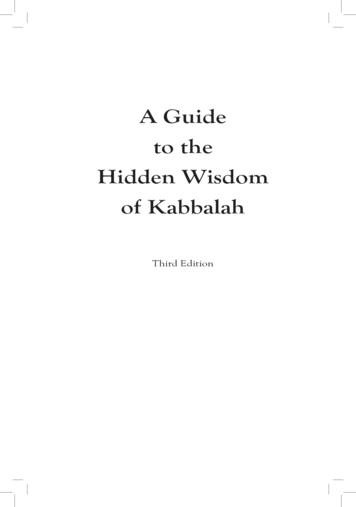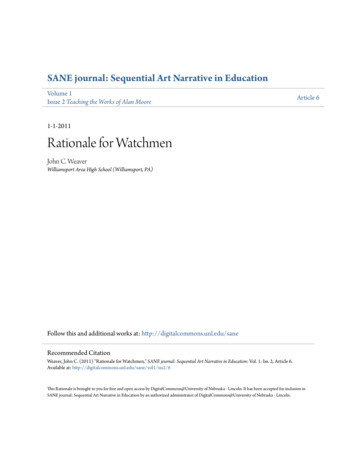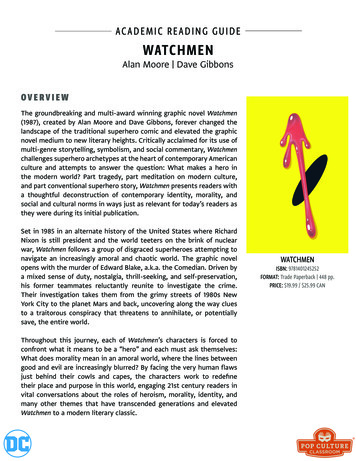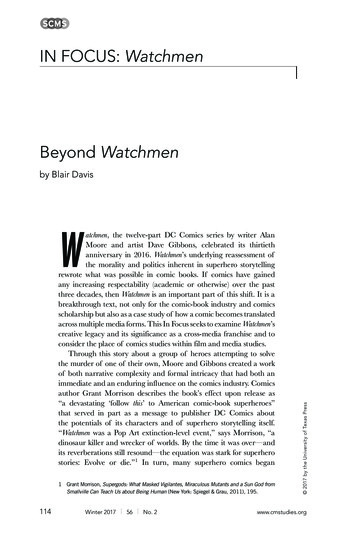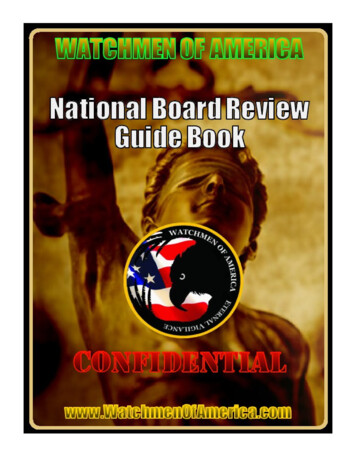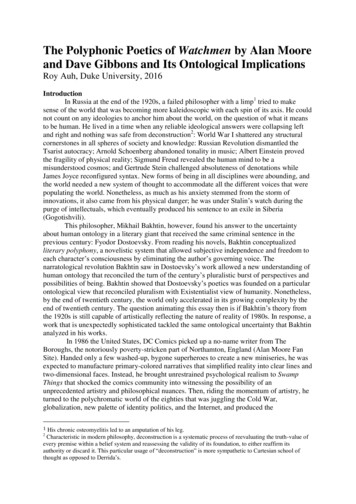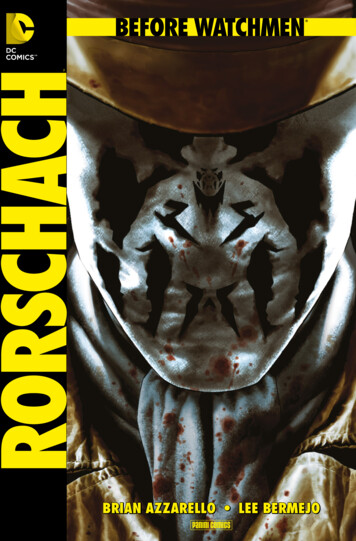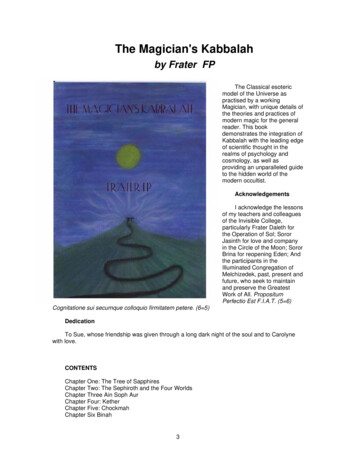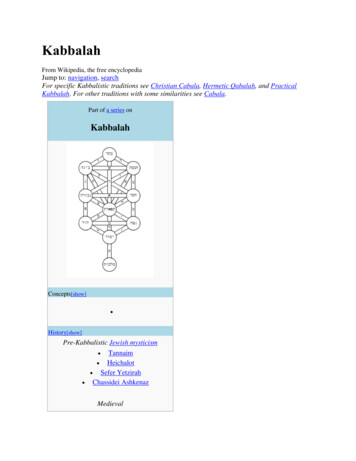
Transcription
KabbalahFrom Wikipedia, the free encyclopediaJump to: navigation, searchFor specific Kabbalistic traditions see Christian Cabala, Hermetic Qabalah, and PracticalKabbalah. For other traditions with some similarities see Cabala.Part of a series onKabbalahConcepts[show] History[show]Pre-Kabbalistic Jewish mysticism Tannaim Heichalot Sefer Yetzirah Chassidei AshkenazMedieval
BahirToledano tradition Prophetic Kabbalah ZoharKabbalistic commentarieson the BibleMainstream displacement ofrationalism with KabbalahEarly modern Baal Shem-Nistarim Sabbatean mystical heresies Emden-Eybeschutz controversy Immigration to the Land of Israel Traditional Oriental Kabbalists Beit El SynagogueEastern European JudaismHasidic Judaism / philosophy Lithuanian JewsHasidic-Mitnagdic schism ModernHasidic dynastiesMysticism inreligious ZionismAcademic interest inJewish mysticismNon-Orthodox interest inJewish mysticism
Practices[show] People[show] 100sFour Who Entered the Pardes Simeon bar Yochai1100s Isaac the Blind Azriel1200s Nahmanides Abraham Abulafia Joseph ben Abraham Gikatilla Moses de LeonMenahem Recanati 1300sBahya ben Asher1400s1500s Meir ibn Gabbai Joseph Karo Shlomo Alkabetz Moshe Alshich Moshe Cordovero
Isaac LuriaChaim VitalJudah Loew ben Bezalel1600sIsaiah HorowitzAbraham Azulai 1700s Chaim ibn Attar Baal Shem Tov Dov Ber of MezeritchMoshe Chaim Luzzatto Shalom Sharabi Vilna GaonChaim Joseph David Azulai Nathan AdlerSchneur Zalman of Liadi Chaim Volozhin1800sNachman of Breslov Ben Ish ChaiShlomo Eliyashiv1900sAbraham Isaac Kook Yehuda Ashlag
Baba SaliMenachem Mendel SchneersonRole[show]History Torah Tanakh Prophecy Ruach HaKodesh Pardes exegesisTalmudical hermeneutics MidrashJewish comentarieson the Bible Oral TorahEras of Rabbinic Judaism Generational descent in Halacha Generational ascent in Kabbalah Rabbinic literature Talmudic theology Halakha Aggadah Hakira Classic Mussar literature
Ashkenazi Judaism Sephardi JudaismModern Jewish philosophies Jewish studiesTopicsGod in JudaismDivine transcendence Divine immanence Free will Divine providenceKabbalistic reasonsfor the 613 Mitzvot Jewish principles of faith Jewish eschatology v t ePart of a series onJudaism
Movements[show] Philosophy[show] Texts[show]oLaw[show] Holy Cities[show] Places[show] Important figures[show] Rabbinic Sages[show] Religious roles[show] Culture[show]
Education[show] Ritual objects[show] Prayers[show] Relations with other religions[show] Related topics[show] CategoryPortalWikiProject v t eKabbalah (Hebrew: ַק ָּבלָּה , literally "receiving/tradition"; also Romanised Cabala, Qabbālâ, etc.;different transliterations now tend to denote alternative traditions[1]) is an esoteric method,discipline, and school of thought. A traditional Kabbalist in Judaism is called a Mekubal(Hebrew: )מְקּובָּל .Kabbalah's definition varies according to the tradition and aims of those following it,[2] from itsreligious origin as an integral part of Judaism, to its later Christian, New Age, or Occultistsyncretic adaptations. Kabbalah is a set of esoteric teachings meant to explain the relationshipbetween an unchanging, eternal, and mysterious Ein Sof (no end) and the mortal and finiteuniverse (God's creation). While it is heavily used by some denominations, it is not a religiousdenomination in itself. It forms the foundations of mystical religious interpretation. Kabbalah
seeks to define the nature of the universe and the human being, the nature and purpose ofexistence, and various other ontological questions. It also presents methods to aid understandingof these concepts and thereby attain spiritual realisation.Kabbalah originally developed entirely within the realm of Jewish thought, and kabbalists oftenuse classical Jewish sources to explain and demonstrate its esoteric teachings. These teachingsare held by followers in Judaism to define the inner meaning of both the Hebrew Bible andtraditional Rabbinic literature and their formerly concealed transmitted dimension, as well as toexplain the significance of Jewish religious observances.[3]Traditional practitioners believe its earliest origins pre-date world religions, forming theprimordial blueprint for Creation's philosophies, religions, sciences, arts, and political systems.[4]Historically, Kabbalah emerged, after earlier forms of Jewish mysticism, in 12th- to 13th-centurySouthern France and Spain, becoming reinterpreted in the Jewish mystical renaissance of 16thcentury Ottoman Palestine. It was popularised in the form of Hasidic Judaism from the 18thcentury onwards. 20th-century interest in Kabbalah has inspired cross-denominational Jewishrenewal and contributed to wider non-Jewish contemporary spirituality, as well as engaging itsflourishing emergence and historical re-emphasis through newly established academicinvestigation.Contents[hide] 1 Overviewo 1.1 Difference between Jewish and non-Jewish Cabala2 History of Jewish mysticismo 2.1 Origins of Judaic mysticism 2.1.1 Origins of terms 2.1.2 Mystic elements of the Toraho 2.2 Mystical doctrines in the Talmudic erao 2.3 Pre-Kabbalistic schoolso 2.4 Medieval emergence of the Kabbalaho 2.5 Early modern era: Lurianic Kabbalah 2.5.1 Ban on studying Kabbalah 2.5.2 Sefardi and Mizrahi 2.5.3 Maharal 2.5.4 Sabbatian mysticism 2.5.5 Frankism 2.5.6 Modern era traditional Kabbalah 2.5.7 Hasidic Judaism 2.5.8 20th century influence3 Conceptso 3.1 Concealed and Revealed Godo 3.2 Sefirot and the Divine Feminine 3.2.1 Ten Sefirot as process of Creation
3.2.2 Ten Sefirot as process of ethicso 3.3 Descending spiritual Worldso 3.4 Origin of evilo 3.5 Role of Mano 3.6 Levels of the soulo 3.7 Reincarnationo 3.8 Tzimtzum, Shevirah and Tikuno 3.9 Linguistic mysticism of Hebrew4 Primary texts5 Scholarshipo 5.1 Claims for authority6 Criticismo 6.1 Dualistic cosmologyo 6.2 Distinction between Jews and non-Jewso 6.3 Medieval viewso 6.4 Orthodox Judaismo 6.5 Conservative, Reform and Reconstructionist Judaism7 Contemporary studyo 7.1 Universalist Jewish organisationso 7.2 Neo-Hasidico 7.3 Hasidico 7.4 Rav Kook8 See also9 Notes10 References11 External linksOverview[edit]According to the Zohar, a foundational text for kabbalistic thought, Torah study can proceedalong four levels of interpretation (exegesis).[5][6] These four levels are called pardes from theirinitial letters (PRDS Hebrew: פרדס , orchard). Peshat (Hebrew: פשט lit. "simple"): the direct interpretations of meaning.Remez (Hebrew: רמז lit. "hint[s]"): the allegoric meanings (through allusion).Derash (Hebrew: דרש from Heb. darash: "inquire" or "seek"): midrashic (Rabbinic)meanings, often with imaginative comparisons with similar words or verses.Sod (Hebrew: סוד lit. "secret" or "mystery"): the inner, esoteric (metaphysical) meanings,expressed in kabbalah.Kabbalah is considered by its followers as a necessary part of the study of Torah – the study ofTorah (the Tanakh and Rabbinic literature) being an inherent duty of observant Jews.[7] Kabbalahteaches doctrines that are accepted by some Jews as the true meaning of Judaism while otherJews have rejected these doctrines as heretical and antithetical to Judaism. After the MedievalKabbalah, and especially after its 16th-century development and synthesis, Kabbalah replacedJewish philosophy (hakira) as the mainstream traditional Jewish theology,[citation needed] both in
scholarly circles and in the popular imagination. With the arrival of modernity, through theinfluence of haskalah, this has changed among non-Orthodox Jewish denominations, although its20th-century academic study and cross-denominational spiritual applications (especially throughNeo-Hasidism) has reawakened a following beyond Orthodoxy.The origins of the term "kabbalah" are unknown and disputed to belong either to Jewishphilosopher Solomon ibn Gabirol (1021–1058) or else to the 13th-century Spanish kabbalistBahya ben Asher. While other terms have been used in many religious documents from the 2ndcentury up to the present day, the term "kabbalah" has become the main descriptive of Jewishesoteric knowledge and practices.[citation needed] Jewish mystical literature, which served as thebasis for the development of kabbalistic thought, developed through a theological traditioninherent in Judaism from Antiquity, as part of wider Rabbinic literature. Its theoreticaldevelopment can be characterised in alternative schools and successive stages. After the HebrewBible experience of prophecy, the first documented schools of specifically mystical theory andmethod in Judaism are found in the 1st and 2nd centuries, described in the heichalot (supernal"palaces") texts and the earliest existent book on Jewish esotericism, Sefer Yetzirah. Theirmethod, known as Merkabah (contemplation of the Divine "Chariot") mysticism lasted until the10th century, where it was subsumed by the Medieval doctrinal emergence of the Kabbalah insouthwestern Europe in the 12th and 13th centuries. Its teachings, embodied in the Zohar,became the foundation of later Jewish mysticism, becoming re-interpreted in the early-moderndevelopments of 16th-century Safed in the Galilee, through the new system of Isaac Luria.Lurianic Kabbalah became popularised as a social mysticism for the whole Jewish communitythrough 18th-century Hasidism in eastern Europe, and its new notions of mystical leadership.Modern academic-historical study of Jewish mysticism reserves the term "kabbalah" to designatethe particular, distinctive doctrines that textually emerged fully expressed in the Middle Ages, asdistinct from the earlier Merkabah mystical concepts and methods.[8] According to thisdescriptive categorisation, both versions of Kabbalistic theory, the medieval-Zoharic and theearly-modern Lurianic together comprise the theosophical tradition in Kabbalah, while themeditative-ecstatic Kabbalah incorporates a parallel inter-related Medieval tradition. A thirdtradition, related but more shunned, involves the magical aims of Practical Kabbalah. MosheIdel, for example, writes that these 3 basic models can be discerned operating and competingthroughout the whole history of Jewish mysticism, beyond the particular Kabbalistic backgroundof the Middle Ages.[9] They can be readily distinguished by their basic intent with respect toGod: The Theosophical tradition of Theoretical Kabbalah (the main focus of the Zohar andLuria) seeks to understand and describe the divine realm. As an alternative to rationalistJewish philosophy, particularly Maimonides' Aristotelianism, this speculation became thecentral component of KabbalahThe Ecstatic tradition of Meditative Kabbalah (exemplified by Abulafia and Isaac ofAcre) strives to achieve a mystical union with God. Abraham Abulafia's "PropheticKabbalah" was the supreme example of this, though marginal in Kabbalisticdevelopment, and his alternative to the program of theosophical KabbalahThe Magico-theurgical tradition of Practical Kabbalah (in often unpublishedmanuscripts) endeavours to alter both the Divine realms and the World. While some
interpretations of prayer see its role as manipulating heavenly forces, Practical Kabbalahproperly involved white-magical acts, and was censored by kabbalists for only thosecompletely pure of intent. Consequently it formed a separate minor tradition shunnedfrom KabbalahAccording to traditional belief, early kabbalistic knowledge was transmitted orally by thePatriarchs, prophets, and sages (hakhamim in Hebrew), eventually to be "interwoven" intoJewish religious writings and culture. According to this view, early kabbalah was, in around the10th century BC, an open knowledge practiced by over a million people in ancient Israel.[10]Foreign conquests drove the Jewish spiritual leadership of the time (the Sanhedrin) to hide theknowledge and make it secret, fearing that it might be misused if it fell into the wrong hands.[11]The Sanhedrin leaders were also concerned that the practice of kabbalah by Jews of the Jewishdiaspora, unsupervised and unguided by the masters, might lead them into wrong practice andforbidden ways. As a result, the kabbalah became secretive, forbidden and esoteric to Judaism(Torat Ha'Sod )תורת הסוד for two and a half millennia.[citation needed]It is hard to clarify with any degree of certainty the exact concepts within kabbalah. There areseveral different schools of thought with very different outlooks; however, all are accepted ascorrect.[12] Modern halakhic authorities have tried to narrow the scope and diversity withinkabbalah, by restricting study to certain texts, notably Zohar and the teachings of Isaac Luria aspassed down through Hayyim ben Joseph Vital.[13] However even this qualification does little tolimit the scope of understanding and expression, as included in those works are commentaries onAbulafian writings, Sefer Yetzirah, Albotonian writings, and the Berit Menuhah,[14] which isknown to the kabbalistic elect and which, as described more recently by Gershom Scholem,combined ecstatic with theosophical mysticism. It is therefore important to bear in mind whendiscussing things such as the sefirot and their interactions that one is dealing with highly abstractconcepts that at best can only be understood intuitively.[15]Difference between Jewish and non-Jewish Cabala[edit]Latin translation of Gikatilla's Shaarei OraFrom the Renaissance onwards Jewish Kabbalah texts entered non-Jewish culture, where theywere studied and translated by Christian Hebraists and Hermetic occultists.[16] Syncretictraditions of Christian Cabala and Hermetic Qabalah developed independently of JewishKabbalah, reading the Jewish texts as universal ancient wisdom. Both adapted the Jewishconcepts freely from their Judaic understanding, to merge with other theologies, religious
traditions and magical associations. With the decline of Christian Cabala in the Age of Reason,Hermetic Qabalah continued as a central underground tradition in Western esotericism. Throughthese non-Jewish associations with magic, alchemy and divination, Kabbalah acquired somepopular occult connotations forbidden within Judaism, where Jewish theurgic Practical Kabbalahwas a minor, permitted tradition restricted for a few elite. Today, many publications on Kabbalahbelong to the non-Jewish New Age and occult traditions of Cabala, rather than giving an accuratepicture of Judaic Kabbalah.[17] Instead, academic and traditional publications now translate andstudy Judaic Kabbalah for wide readership.History of Jewish mysticism[edit]See also: Jewish mysticismForms of Jewish mysticism800–500BCE300–100BCEc. 0–130sCE100 BCE– 1000CE200–600CEC. 11501250 CEc. 1175–1570 CEProphetic JudaismApocalypticJudaismRabbinic mysticismMerkabah-HekhalotProto-KabbalahChassidei AshkenazMedievalKabbalah MeditativeProphetic Practical Kabbalah Safed KabbalahLurianic KabbalahSabbateanmovementsHasidic Judaism1500s CE Hasidic schools1570 CE– NeotodayHasidism/Kabbalah1665–c. Mystical Zionism
1800 CE Academic study1730sCE–todayc. 1900s–todayc. 1910s–todayc. 1920s–todayOrigins of Judaic mysticism[edit]According to the traditional understanding, Kabbalah dates from Eden.[18] It came down from aremote past as a revelation to elect Tzadikim (righteous people), and, for the most part, waspreserved only by a privileged few. Talmudic Judaism records its view of the proper protocol forteaching this wisdom, as well as many of its concepts, in the Talmud, Tractate Hagigah, Ch.2.Contemporary scholarship suggests that various schools of Jewish esotericism arose at differentperiods of Jewish history, each reflecting not only prior forms of mysticism, but also theintellectual and cultural milieu of that historical period. Answers to questions of transmission,lineage, influence, and innovation vary greatly and cannot be easily summarised.Origins of terms[edit]Originally, Kabbalistic knowledge was believed to be an integral part of the Oral Torah (see alsoAggadah), given by God to Moses on Mount Sinai around 13th century BCE, though there is aview that Kabbalah began with Adam.When the Israelites arrived at their destination and settled in Canaan, for a few centuries theesoteric knowledge was referred to by its aspect practice—meditation Hitbonenut (Hebrew: )התבוננות ,[19] Rebbe Nachman of Breslov's Hitbodedut (Hebrew: )התבודדות , translated as "beingalone" or "isolating oneself", or by a different term describing the actual, desired goal of thepractice—prophecy ("NeVu'a" Hebrew: )נבואה .During the 5th century BCE, when the works of the Tanakh were edited and canonised and thesecret knowledge encrypted within the various writings and scrolls ("Megilot"), the knowledgewas referred to as Ma'aseh Merkavah (Hebrew: [)מעשה מרכבה 20] and Ma'aseh B'reshit (Hebrew: )מעשה בראשית ,[21] respectively "the act of the Chariot" and "the act of Creation". Merkavahmysticism alluded to the encrypted knowledge within the book of the prophet Ezekiel describinghis vision of the "Divine Chariot". B'reshit mysticism referred to the first chapter of Genesis(Hebrew: )בראשית in the Torah that is believed to contain secrets of the creation of the universeand forces of nature. These terms are also mentioned in the second chapter of the Talmudictractate Haggigah.
Mystic elements of the Torah[edit]Ezekiel and Isaiah had prophetic visions of the angelic Chariot and Divine Throne.According to adherents of Kabbalah, its origin begins with secrets that God revealed to Adam.When read by later generations of Kabbalists, the Torah's description of the creation in the Bookof Genesis reveals mysteries about the godhead itself, the true nature of Adam and Eve, theGarden of Eden, the Tree of Knowledge of Good and Evil and the Tree of Life, as well as theinteraction of these supernal entities with the Serpent which leads to disaster when they eat theforbidden fruit, as recorded in Genesis 3.[22]The Bible provides ample additional material for mythic and mystical speculation. The prophetEzekiel's visions in particular attracted much mystical speculation, as did Isaiah's Templevision—Isaiah, Ch.6. Jacob's vision of the ladder to heaven provided another example of esotericexperience. Moses' encounters with the Burning bush and God on Mount Sinai are evidence ofmystical events in the Torah that form the origin of Jewish mystical beliefs.The 72 letter name of God which is used in Jewish mysticism for meditation purposes is derivedfrom the Hebrew verbal utterance Moses spoke in the presence of an angel, while the Sea ofReeds parted, allowing the Hebrews to escape their approaching attackers. The miracle of theExodus, which led to Moses receiving the Ten Commandments and the Jewish Orthodox view ofthe acceptance of the Torah at Mount Sinai, preceded the creation of the first Jewish nationapproximately three hundred years before King Saul.Mystical doctrines in the Talmudic era[edit]Grave of Rabbi Akiva in Tiberias. He features in Hekhalot mystical literature, and as one of thefour who entered the Pardes
The grave of Shimon bar Yochai in Meron before 1899. A Talmudic Tanna, he is the mysticalteacher in the central Kabbalistic work, the ZoharIn early rabbinic Judaism (the early centuries of the 1st millennium CE), the terms Ma'asehBereshit ("Works of Creation") and Ma'aseh Merkabah ("Works of the Divine Throne/Chariot")clearly indicate the Midrashic nature of these speculations; they are really based upon Genesis 1and Book of Ezekiel 1:4–28, while the names Sitrei Torah (Hidden aspects of the Torah)(Talmud Hag. 13a) and Razei Torah (Torah secrets) (Ab. vi. 1) indicate their character as secretlore. An additional term also expanded Jewish esoteric knowledge, namely Chochmah Nistara(Hidden wisdom).Talmudic doctrine forbade the public teaching of esoteric doctrines and warned of their dangers.In the Mishnah (Hagigah 2:1), rabbis were warned to teach the mystical creation doctrines onlyto one student at a time.[23] To highlight the danger, in one Jewish aggadic ("legendary")anecdote, four prominent rabbis of the Mishnaic period (1st century CE) are said to have visitedthe Orchard (that is, Paradise, pardes, Hebrew: פרדס lit., orchard):"Four men entered pardes—Ben Azzai, Ben Zoma, Acher (Elisha ben Abuyah),[24] and Akiba.Ben Azzai looked and died; Ben Zoma looked and went mad; Acher destroyed the plants; Akibaentered in peace and departed in peace."[25]In notable readings of this legend, only Rabbi Akiba was fit to handle the study of mysticaldoctrines. The Tosafot, medieval commentaries on the Talmud, say that the four sages "did notgo up literally, but it appeared to them as if they went up".[26] On the other hand, Rabbi LouisGinzberg, writes in the Jewish Encyclopedia (1901–1906) that the journey to paradise "is to betaken literally and not allegorically".[27] For further analysis, see The Four Who EnteredParadise.Maimonides interprets pardes as physics and not mysticism.[28][need quotation to verify]Pre-Kabbalistic schools[edit]Main articles: Hekhalot literature, Merkabah mysticism, and Chassidei AshkenazThe mystical methods and doctrines of Hekhalot (Heavenly "Chambers") and Merkabah (Divine"Chariot") texts, named by modern scholars from these repeated motifs, lasted from the 1stcentury BCE through to the 10th century, before giving way to the documented manuscriptemergence of Kabbalah. Initiates were said to "descend the chariot", possibly a reference tointernal introspection on the Heavenly journey through the spiritual realms. The ultimate aimwas to arrive before the transcendent awe, rather than nearness, of the Divine. From the 8th to11th centuries, the Hekhalot texts, and the proto-Kabbalistic early Sefer Yetzirah ("Book ofCreation") made their way into European Jewish circles.Another, separate influential mystical movement, shortly before the arrival there of Kabbalistictheory, was the "Chassidei Ashkenaz" ( )זנכשא ידיסח or Medieval German Pietists from 1150-
1250. This ethical-ascetic movement arose mostly among a single scholarly family, theKalonymus family of the French and German Rhineland.Medieval emergence of the Kabbalah[edit]The 13th-century eminence of Nachmanides, a classic Rabbinic figure, gave Kabbalahmainstream acceptance through his Torah commentaryModern scholars have identified several mystical brotherhoods that functioned in Europe startingin the 12th century. Some, such as the "Iyyun Circle" and the "Unique Cherub Circle", were trulyesoteric, remaining largely anonymous.There were certain Rishonim ("Elder Sages") of exoteric Judaism who are known to have beenexperts in Kabbalah. One of the best known is Nahmanides (the Ramban) (1194–1270) whosecommentary on the Torah is considered to be based on Kabbalistic knowledge. Bahya ben Asher(the Rabbeinu Behaye) (d. 1340) also combined Torah commentary and Kabbalah. Another wasIsaac the Blind (1160–1235), the teacher of Nahmanides, who is widely argued to have writtenthe first work of classic Kabbalah, the Bahir (Book of "Brightness").Sefer Bahir and another work, the "Treatise on the Left Emanation", probably composed in Spainby Isaac ben Isaac ha-Kohen, laid the groundwork for the composition of Sefer Zohar ("Book ofSplendor/Radiance"), written by Moses de Leon and his mystical circle at the end of the 13thcentury but credited to the Talmudic sage Shimon bar Yochai (cf. Zohar). The Zohar proved tobe the first truly "popular" work of Kabbalah, and the most influential. From the 13th centuryonward, Kabbalah began to be widely disseminated, and it branched out into an extensiveliterature. Historians in the 19th century, for example, Heinrich Graetz, argued that theemergence into public view of Jewish esotericism at this time coincides with, and represents aresponse to, the rising influence of the rationalist philosophy of Maimonides and hisfollowers.[citation needed] Gershom Scholem sought to undermine this view as part of his resistanceto seeing Kabbalah as merely a response to medieval Jewish rationalism.[citation needed] Arguing fora gnostic influence has to be seen as part of this strategy.[citation needed] More recently, Moshe Ideland Elliot Wolfson have independently argued that the impact of Maimonides can be seen in thechange from orality to writing in the 13th century.[citation needed] That is, Kabbalists committed towriting many of their oral traditions in part as a response to the attempt of Maimonides toexplain the older esoteric subjects philosophically.
Many Orthodox Jews reject the idea that Kabbalah underwent significant historical developmentor change such as has been proposed above. After the composition known as the Zohar waspresented to the public in the 13th century, the term "Kabbalah" began to refer more specificallyto teachings derived from, or related to, the Zohar. At an even later time, the term began togenerally be applied to Zoharic teachings as elaborated upon by Isaac Luria Arizal. Historiansgenerally date the start of Kabbalah as a major influence in Jewish thought and practice with thepublication of the Zohar and climaxing with the spread of the Arizal's teachings. The majority ofHaredi Jews accept the Zohar as the representative of the Ma'aseh Merkavah and Ma'asehB'reshit that are referred to in Talmudic texts.[29]Early modern era: Lurianic Kabbalah[edit]Main article: Lurianic KabbalahThe leading scholars in 16th-century Safed invigorated mainstream Judaism through new legal,liturgical, exegetical and Lurianic-mythological developmentsFollowing the upheavals and dislocations in the Jewish world as a result of anti-Judaism duringthe Middle Ages, the Spanish Inquisition, and the national trauma of the expulsion from Spain in1492, closing the Spanish Jewish flowering, Jews began to search for signs of when the longawaited Jewish Messiah would come to comfort them in their painful exiles. In the 1500s thecommunity of Safed in the Galilee became the centre of Jewish mystical, exegetical, legal andliturgical developments. The Safed mystics responded to the Spanish expulsion by turningKabbalistic doctrine and pracice towards a messianic focus. Moses Cordovero and his schoolpopularised the teachings of the Zohar which had until then been only a restricted work.Cordovero's comprehensive works achieved the systemisation of preceding Kabbalah. Theauthor of the Shulkhan Arukh (the normative Jewish "Code of Law"), Rabbi Yosef Karo (1488–1575), was also a scholar of Kabbalah who kept a personal mystical diary. Moshe Alshich wrotea mystical commentary on the Torah, and Shlomo Alkabetz wrote Kabbalistic commentaries andpoems.The messianism of the Safed mystics culminated in Kabbalah receiving its biggesttransformation in the Jewish world with the explication of its new interpretation from RabbiIsaac Luria (1534–1572), by his disciples Hayim Vital and Israel Sarug. Both transcribed Luria'steachings (in variant forms) gaining them widespread popularity, Sarug taking LurianicKabbalah to Europe, Vital authoring the latterly canonical version. Luria's teachings came to
rival the influence of the Zohar and Luria stands, alongside Moses de Leon, as the mostinfluential mystic in Jewish history.Ban on studying Kabbalah[edit]"I have seen it written that the prohibition from Above to refrain from open study in the wisdom of truth wasonly for a limited period, until the end of 1490, but from then on the prohibition has been lifted and permissionwas granted to study the Zohar. Since 1540 it has been a great Mitzva (commandment) for the masses to studyin public, old and young. and that is because the Messiah will come because of that and not because of anyother reason. Therefore, we must not be negligent."Rabbi Abraham Ben Mordechai Azulai, Introduction to the book, Ohr HaChama [Light of the Sun] [30]The ban on studying Kabbalah was lifted by the efforts of the 16th-century kabbalist RabbiAvraham Azulai (1570–1643)."I have found it written that all that has been decreed Above forbidding open involvement in theWisdom of Truth [Kabbalah] was [only meant for] the limited time period until the year 5,250(1490 C.E.). From then on after is called the "Last Generation", and what was forbidden is [now]allowed. And permission is granted to occupy ourselves in the [study of] Zohar. And from theyear 5,300 (1540 C.E.) it is most desirable that the masses both those great and small [in Torah],should occupy themselves [in the study of Kabbalah], as it says in the Raya M'hemna [a sectionof the Zohar]. And because in this merit King Mashiach will come in the future—and not in anyother merit—it is not proper to be discouraged [from the study of Kabbalah]."[31]The question, however, is whether the ban ever existed in the first place. Concerning the abovequote by Avraham Azulai, it has found many versions in English, another is this"From the year 1540 and onward, the basic levels of Kabbalah must be taught publicly toeveryone, young and old. Only through Kabbalah will we forever eliminate war, destruction, andman's inhumanity to his fellow man."[32]The lines concerning the year 1490 are also missing from the Hebrew edition of HesedL'Avraham, the source work that both of these quote from. Furthermore, by Azulai's view the banwas lifted thirty years before his birth, a time that would have corresponded with Haim Vital'spublication of the teaching of Isaac Luria. Moshe Isserles understood there to be only a minorrestriction, in his words, "One's belly must be full of meat and wine, discerning between theprohibited and the permitted."[33] He is supported by the Bier Hetiv, the Pithei Teshuva as well asthe Vilna Gaon. The Vilna Gaon says, "There was never any ban or enactment restricting thestudy of the wisdom of Kabbalah. Any who says there is has never studied Kabbalah, has neverseen PaRDeS, and speaks as an ignoramous."[34]Sefardi and Mizrahi[edit]
Synagogue Beit El Jerusalem. Oriental Judaism has its own chain of KabbalahThe Kabbalah o
Kabbalah's definition varies according to the tradition and aims of those following it,[2] from its religious origin as an integral part of Judaism, to its later Christian, New Age, or Occultist syncretic adaptations. Kabbalah is a se


